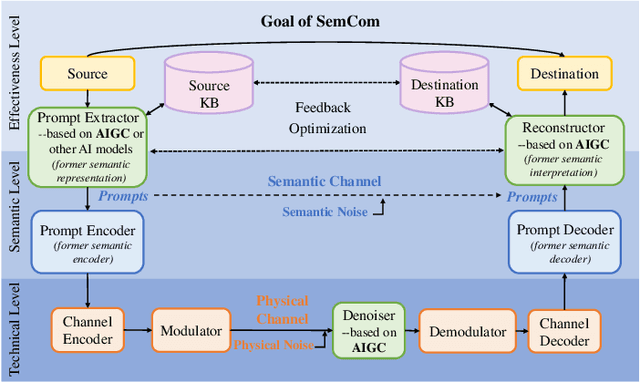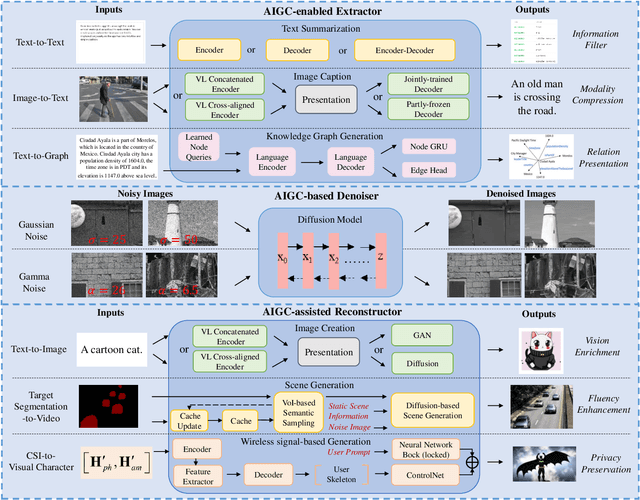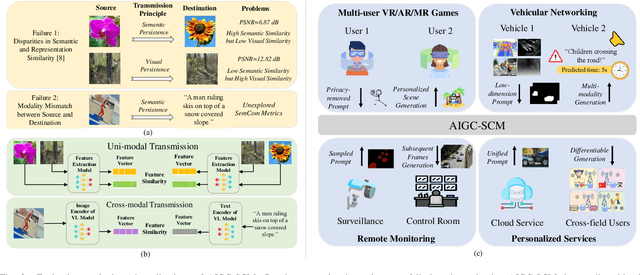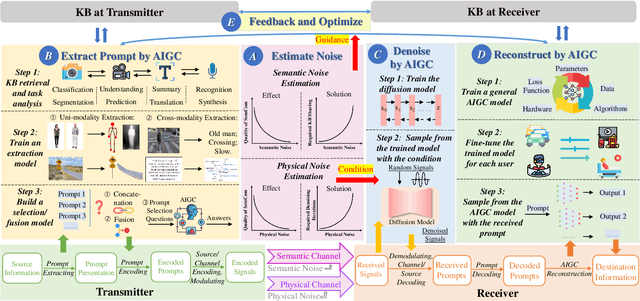Harnessing the Power of AI-Generated Content for Semantic Communication
Paper and Code
Apr 10, 2024



Semantic Communication (SemCom) is envisaged as the next-generation paradigm to address challenges stemming from the conflicts between the increasing volume of transmission data and the scarcity of spectrum resources. However, existing SemCom systems face drawbacks, such as low explainability, modality rigidity, and inadequate reconstruction functionality. Recognizing the transformative capabilities of AI-generated content (AIGC) technologies in content generation, this paper explores a pioneering approach by integrating them into SemCom to address the aforementioned challenges. We employ a three-layer model to illustrate the proposed AIGC-assisted SemCom (AIGC-SCM) architecture, emphasizing its clear deviation from existing SemCom. Grounded in this model, we investigate various AIGC technologies with the potential to augment SemCom's performance. In alignment with SemCom's goal of conveying semantic meanings, we also introduce the new evaluation methods for our AIGC-SCM system. Subsequently, we explore communication scenarios where our proposed AIGC-SCM can realize its potential. For practical implementation, we construct a detailed integration workflow and conduct a case study in a virtual reality image transmission scenario. The results demonstrate our ability to maintain a high degree of alignment between the reconstructed content and the original source information, while substantially minimizing the data volume required for transmission. These findings pave the way for further enhancements in communication efficiency and the improvement of Quality of Service. At last, we present future directions for AIGC-SCM studies.
 Add to Chrome
Add to Chrome Add to Firefox
Add to Firefox Add to Edge
Add to Edge